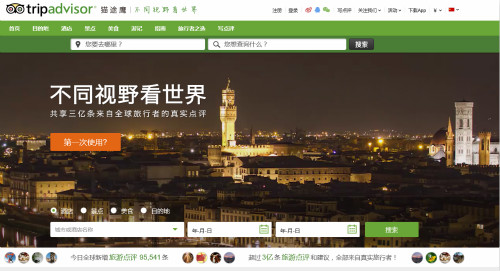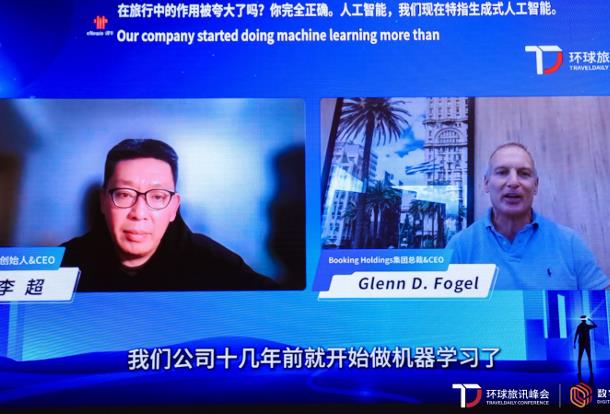There are cultural aspects and design conventions that need to be well understood as early as possible in the product conception cycle for localization, says Fernando Vazquez, Head of Product, Analytics and Content at TripAdvisor China.
The global hotel distribution landscape is in the middle of yet another intriguing phase. Plugging gaps in the booking funnel seems to be a never-ending saga.
In this context, the industry expects the likes of TripAdvisor and Google to refine their offerings on an ongoing basis. Known for their dexterity, such entities have the power to build a stronger brand affiliation via their product and technology expertise, holding on to the massive traffic with valuable propositions.
One of the developments that is being keenly followed is TripAdvisor’s instant booking option.
As TripAdvisor’s CEO and president, Stephen Kaufer, recently indicated during the company’s Q1 earnings call, the focus now is on “delighting more users”, as well as “driving direct business and repeat behavior and plugging the monetization leak”. Importantly, the company has observed that once users sample or go down the instant book path they do end up coming back more frequently than if they went down a meta-search path. But it doesn’t mean that the meta-search is losing out on its sheen completely, as the instant book price isn’t the best.
As TripAdvisor continues to move on with its plan of taking bookings in its own domain, it is quite interesting to assess how the company manages uniformity for its set of localized websites available in 48 markets and in 28 languages.

Product creation flow
Improvisations are done via continuous testing, and it is a fast paced environment. For instance, Expedia conducted 130 average monthly product tests last year!
This even becomes more exciting when considers that fact there could be different iterations at the local level. So how would one design a product for Chinese audience?
“There is no secret sauce for designing product for Chinese consumers, but as with any other market, there are some cultural aspects and design conventions that need to be well understood as early as possible in the product conception cycle,” shared Boston, U. S.-based Fernando Vazquez, Head of Product, Analytics and Content at TripAdvisor China. Citing an example, he said the use of green color to indicate price drops in stock market as opposed to the red used in many other countries.
“Our internal product creation flow is designed to be transparent, collective and agile,” Fernando said.
According to him, testing offers that early intelligence about the users’ response to the product and the ability to improve it further with confidence. In addition to this, there are other types of quantitative/ qualitative research such as questionnaires, focus groups, usability tests etc. to assess Chinese travellers’ attitude and perception, he said.
As for TripAdvisor’s benchmark for assessing the efficacy of a PC website and mobile app, Fernando pointed out that in essence they are very similar although in the mobile world there are different types of analysis that were not possible or less relevant on desktop. “For example, user location can reveal very interesting patterns about users’ content needs and shopping intent, and this is especially important for the travel vertical: a mobile user sitting in the sofa at home is much more likely to use TripAdvisor to browse and book hotels, while a traveller that is already in the streets of Madrid would be most interested in using TripAdvisor app to find nearby restaurants or book tickets for their next attraction or activity.”
Localizing digital assets for Chinese audience
According to TripAdvisor’s TripBarometer 2016 Travel Trends report, free Wi-Fi and air-conditioning are the two must-have amenities for Chinese travellers when they look to book their accommodation. Fernando also mentioned that price continues to be a key factor but aside from that, proximity to transport options, key attractions, as well as traveller reviews/ratings are important to Chinese travelers when making their booking decisions.
Talking of localization of TripAdvisor’s digital assets, Fernando shared:
1. Filters in search page: “We take all of this (preferences while booking) into consideration when designing the experience that will help users find the perfect hotel and that happens in various different ways,” shared Fernando. For example, the filters on TripAdvisor’s hotel search page allow users to narrow down the list of hotels available based on their selections. They can also highlight elements that they feel are critical to help them in their booking decision. Today’s Chinese travelers also favor independent travel and want to discover new places that the masses haven’t been to. “These travellers have a strong desire to discover new places that are off the beaten path. To enable this discovery, we also provide insights into unique hospitality experiences through our social media channels, whether it being castle hotels, converted homes or traditional ryokans in Japan.”
2. Relevant content: In China, the company’s mainland Chinese site TripAdvisor Mao Tu Ying, has been designed to be more user-friendly to Chinese users, providing content that is relevant and unique to them. In addition to adapting user experience to the local market, the company has also launched a community-powered translation program that facilitates Chinese traveller access to user generated content submitted globally by the online travel community.
3. Mobile-specific changes: When TripAdvisor re-launched its TripAdvisor app exclusively for China, it was for the first time ever that TripAdvisor made such a specific localization solution for one single market. This was done to coincide with the rebranding of TripAdvisor Mao Tu Ying.
The TripAdvisor (Mao Tu Ying) app includes popular features of the global version, such as the TripAdvisor PriceFinder tool which searches partner sites to find the best hotel prices, the “Near Me Now” feature that guides travellers to nearly places to eat, stay , see and do using their phone’s GPS, and the “Offline feature that enables travelers to access TripAdvisor reviews, photos and city maps with no data connection is available helping them avoid costly roaming charges. In addition, the TripAdvisor (Mao Tu Ying) app also includes specific features tailored for the China market, such as travel guides and travel blogs that are popular amongst Chinese users.
As for instant booking, there hasn’t been any tie-up with a local OTA. TripAdvisor has tied up with Priceline and host of other travel ecommerce players for Instant Booking option. So what about replicating the same with Ctrip.com, Qunar.com etc. in China?

TripAdvisor’s partnership with Priceline Group and its Booking.com inventory have helped to accelerate the overall instant booking expansion due to the online travel agency’s extensive global property listings, localized content and outstanding customer service. “We are always looking for strategic partnership opportunities and are in ongoing discussions with a number of hotel brands and online travel agencies,” said Fernando.




